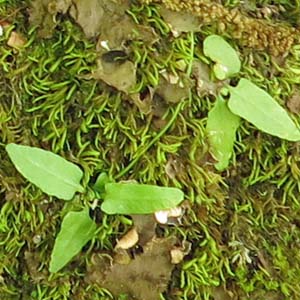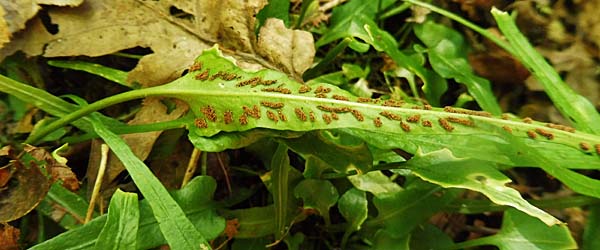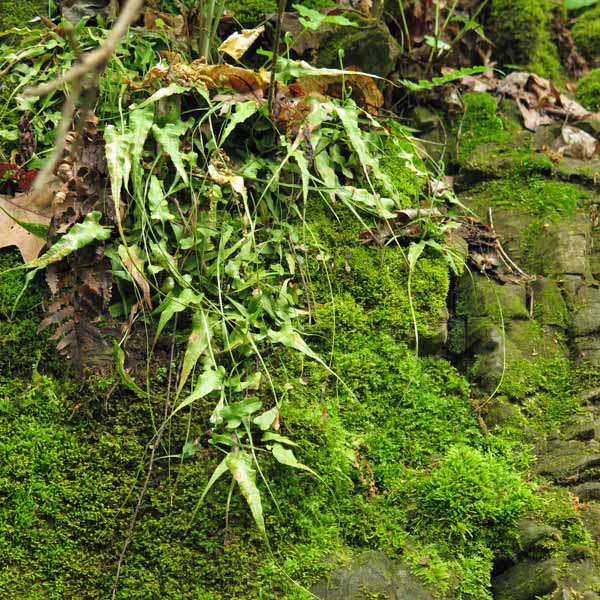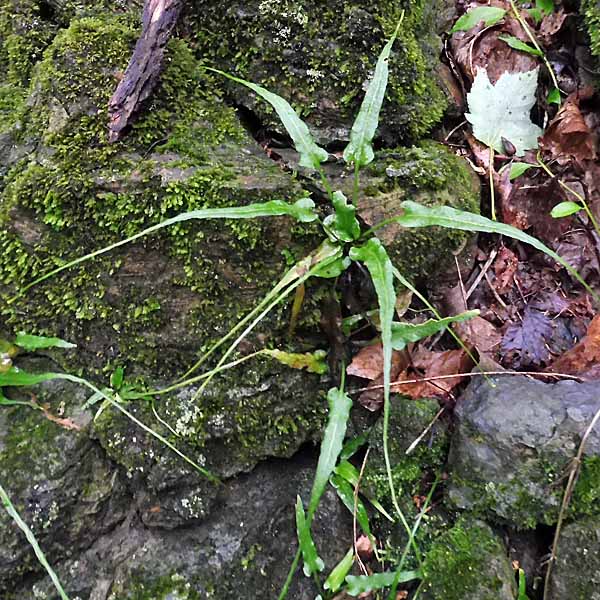Asplenium rhizophyllum, walking fern, is a distinctive small native herbaceous perennial plant found in high quality limestone natural areas. It has evergreen fronds. It is also known as 'walking spleenwort' since it is in the spleenwort family.
Fronds
The walking fern, Asplenium rhizophyllum, leaves, fronds, are evergreen, over wintering. They are simple, not dissected (cut) as are most fronds. The fronds are 2 to 12 inches long, with long tapering narrow tips and a broader base that is heart shaped or with basal lobes. The edges are smooth or wavy. The plant grows in clumps.

The fronds are arching and spreading. Walking fern reproduces vegetatively when the long narrow frond tips touch the ground and new roots and shoots can develop giving the plant the name "walking fern".
In the photo below, the small shoot can be seen in the upper left.
Young shoots still connected to the adult frond.

Sori
Sori are spore bearing structures that are on the lower surface of the fronds. The sori are elongated in shape and irregularly located along the frond. The matured spores are released and generate the gametophyte generation where sexual reproduction takes place.

Habitat
Walking fern habitat includes shaded rocky moist ledges and cliffs usually limestone, mossy boulders, and limestone ravines. We have seen it at Johnsonburg Swamp Preserve, Sussex Swamp Preserve, and Kittatinny Valley State Park which are all limestone areas in Sussex county.


Text by Millie Ling and all photos by Hubert & Millie Ling in Sussex County limestone areas.
Additional information
Additional information / references:
The USDA website shows its distribution in the US,
https://plants.usda.gov/core/profile?symbol=ASRH2
Minnesota Wildflowers has good descriptions of the plant parts:
https://www.minnesotawildflowers.info/fern/walking-fern
Illinois wildflowers is also a good source of information:
https://www.illinoiswildflowers.info/grasses/plants/walking_fern.htm